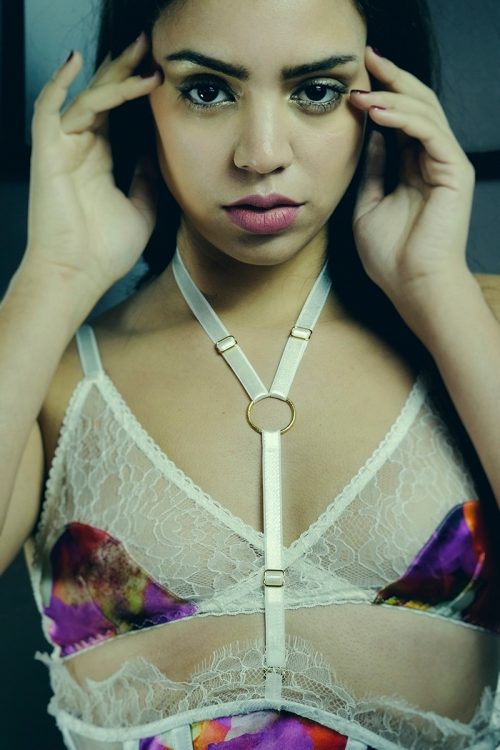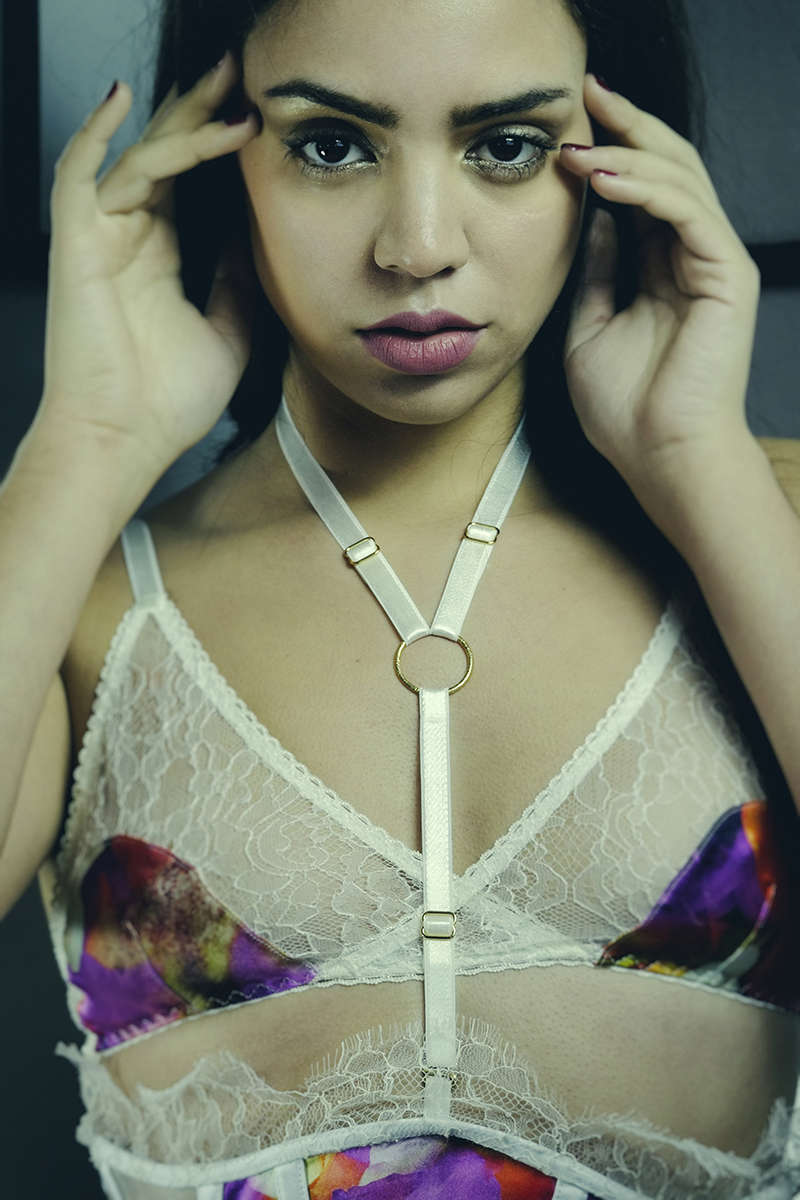This is part one of a series deconstructing the intricacies of wired bras and their significance to independent lingerie designers.
I make no bones about the fact that I am in very deep into the world of lingerie. Maybe a little too deep. Everything about it has become second nature to me, to the extent that I often forget that the knowledge that I take for granted is completely unknown to the average consumer. The average bra wearer simply has no idea about the amount of work that can go into that single garment.

Photography by Simon Crinks
Modelled by Yazzmin
MUA by Violet Zeng
Macarons by Zoe Anderson
As an independent designer myself and general lingerie obsessive, I often see the question: ‘why don’t more indie designers make wired bras?’. After all, there’s a positive glut of dainty soft cup bras. Soft bras don’t work for everyone though: they’re not the most supportive of styles even on smaller busts and consequently aren’t considered suitable for everyday by many lingerie wearers. Wired bras, with their heavy structuring and carefully constructed cups, offer a superior level of support. Surely, with such demand for them, it should be a staple product for indie lingerie brands?

Design by Karolina Laskowska
Unfortunately, it’s not quite that simple. In this series, I hope to unravel some of the intricacies of the surprisingly complicated wired bra that make this garment difficult, if not impossible, for a small-scale lingerie brand to produce. Although the term ‘independent brand’ can apply to quite a variety of business scales, many of the points raised in this series can be generalized.

A wired bra is complicated. So complicated that I would certainly argue it’s one of the trickiest garments to master across the entire board of clothing. Every aspect that goes into its creation requires specialist knowledge.
For all intents and purposes, a wired bra is a piece of engineering. In abstract terms, you’re relying on a few pieces of fabric, elastic and steel wires to lift, support and reshape flesh in a very particular way. Contemporary bras are generally created to create a lifted and rounded bustline to conform to modern fashions: a shape that natural breasts largely don’t adhere to.
Pattern cutting is a skill that requires specialist training and a lot of practice. Personally, I studied for 3 years on a specialist Lingerie focused BA degree. A degree is a very expensive investment for any individual to make for their future. It left me with £25,000 of student loan debt; since recent reforms in British university fees, it would leave similar students with up to double that.

Design by Karolina Laskowska, photo taken by P. J. Laskowski at Graduate Fashion Week 2014
There are in fact only 3 universities worldwide that even offer this course: De Montfort University and London College of Fashion in the UK and Hong Kong Polytechnic in China. Although many fashion course worldwide offer cursory modules in lingerie, they do not offer the expertise or focus of the Contour Fashion degree. (Edit: I’ve since been informed that FIT in New York does offer a full lingerie specialism as part of their fashion design degree) Because of how specialist the knowledge acquired on these courses is, graduates can expect relatively positive job prospects compared to other fashion sectors. But for those looking to start their own lingerie brands, it’s a big cost to shoulder. There are of course also plenty of short courses that offer bra making: however, these are also expensive and don’t offer the level of immersion and specialty of a degree.
Very few independent lingerie brand owners have studied lingerie design to this extent though. Consequently, they have a couple of options facing them. The first would be to outsource product development, often to a freelance designer. This is very common but also very expensive: a brand must have a certain amount of financial capital to be able to achieve this. It’s easy to spend thousands on the development of a single bra style.

Lingerie by Karolina Laskowska
Photography by Jenni Hampshire
Modelled by Yazzmin
In fact, pattern cutting can be arguably one of the most expensive parts of wired bra development. Even on the commercial side of the industry, you will see large-scale brands reusing the same bra shapes again and again. This makes perfect business sense: when you have a style that fits well and you have full technical specifications for it is profitable to repeat it in new colours and embellishments than to create new shapes each season from scratch.
Many young independent brands are unable to even consider the option of outsourcing. As the internet has removed many of the barriers to entry that were previously seen in fashion, people are able to start brands on their own terms. Often this means that brands are headed up by individuals doing everything themselves from their own homes: I would in fact argue that the majority of designers on websites like Etsy are in this position. Consequently, they have to work within their own technical abilities. The pattern cutting of wired bras usually fall outside of this knowledge base, whereas soft cup and unstructured styles are infinitely more achievable.
The patterns for wired bras take a huge amount of time to develop and fit. But the patterns are also inexorably tied to things like components and fabrics. These all interact together to affect how a bra fits and functions. Wired bras require a lot of specialist materials, many of which are relatively difficult to access for small scale designers. I’ll be tackling this topic in part 2 of this series!
Have you ever tried to pattern cut a bra? Which is your favourite indie brand for bras and why?

Yes I have tried to make a bra and my god I agree with you! I’m an amateur seamstress and I had the bright idea of sewing my own bras, so they’d fit perfectly and be exactly what I wanted. Oh how naive I was, I think I made 10 individual attempts before I put it away in the ‘for later drawer’. Even with professional training I can easily see why Indie brands steer away from wired bras, there are just so many variables!
As an aside, Karolina I love your blog, and your designs are amazing. I (in a stalkerish way) went through your older posts from when you were in University and it’s amazing to see how dramatically you improved in just three years. I’ve yet to be able to afford your designs but I’m looking forward to it in the future!
Oh I know that feeling all too well! Now, with everything that I know about bras, I do everything I can to avoid making my own 😉 it’s just nowhere near as cost effective as buying one! That said, from a design perspective, you can certainly have a lot more fun than with bralets… It’s just a shame that it has to bring so many complications.
Aww I’m so happy that my old uni posts are still being viewed, I’m so glad you enjoy them! I’m always a bit scared to look back that far as I always cringe at how bad as I was then haha 🙂
I’d like to invite your readers interested in learning more about cutting and sewing for the underwire to join the Bra Making Forum on Facebook http://www.bramakingforum.com We love encouraging our indie designer members